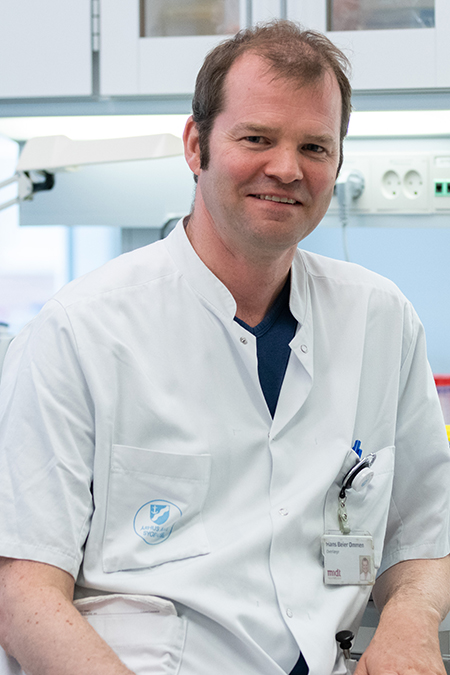Failed chemo against leukemia can be identified early
Meet Hans Beier Ommen
“The importance of my research is found in the value for the patients. New treatments can save patients’ lives but so can diligent action when treatment yields suboptimal results. Thus, the methods I develop can be used to choose the right treatments for AML patients.”
A couple of years ago clinical associate professor Hans Beier Ommen, born 1975, treated a young woman with acute myeloid leukemia (AML). Based on standard methods, everything looked fine, but by using a new monitoring method, which he and his colleagues were testing, they could determine that a leukemic clone resistant to standard dose chemotherapy was emerging. They discussed their findings with the woman and agreed to increase the chemotherapy dose. Side effects made her severely ill, but she prevailed and is cured today.
Hans Beier Ommen’s field of research is AML in the broader sense. More specifically; methods to monitor treatment responses in AML patients. The technical term for these methods are measurable residual disease (MRD) monitoring methods. By using these methods, one of his first achievements was to document how fast the different subtypes of AML grow within the body prior to disease recurrence.
Early indication
Recently, his interest has been to use monitoring techniques to investigate how leukemic subclones respond to therapy. A study of a group of 25 patients with acute myeloid leukemia showed that the development of the disease's clone architecture in the patient can give an early indication of whether the treatment has the desired effect.

Using bone marrow samples, Hans Beier Ommen and his colleagues analyzed the development of the disease in the 25 patients during the first series of chemotherapy. Contrary to the intention of the treatment, new clones of the disease developed during the first series of chemotherapy in three of the patients. All three died within six months.
“The conclusion was that we wanted to try out a more refined method for making a prognosis of how the treatment worked. Already after the first series of chemotherapy, we can now identify the patients where the treatment does not help,” says Hans Beier Ommen.
There are few alternatives to this treatment, but with this group of patients, we still have to talk about whether chemotherapy is the right thing to do, according to Hans Beier Ommen.
“The importance of my research is found in the value for the patients. New treatments can save patients’ lives but so can diligent action when treatment yields suboptimal results. Thus, the methods I develop can be used to choose the right treatments for AML patients.
I currently work with developing methods for precise monitoring for high-risk AML patients. Few methods have been developed for this patient group yet,” he explains.
Hans Beier Ommen’s goal is to produce methods that can be used for all AML patients and that can reliably inform the treating doctors which salvage treatments should be used if AML relapse is near.